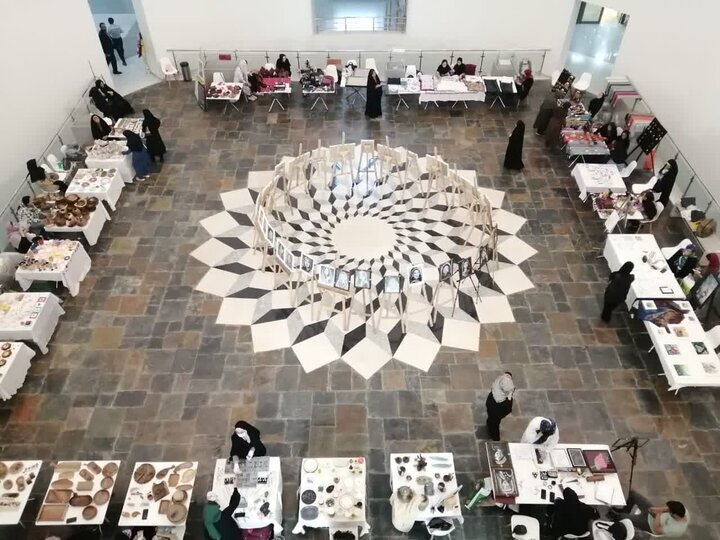Iranian, Afghan handicrafts in joint exhibition

TEHRAN – An exhibition featuring selected works by Iranian and Afghan artisans is currently underway in Mashhad, the capital of Khorasan Razavi province.
Named “Sense of Neighborhood”, the exhibit showcases needlework, personal ornamentations, woodwork, carved stones, and paintings, to name a few, Mehr reported.
Organized by Khorasan Razavi’s tourism directorate in close collaboration with the Islamic Culture and Relations Organization, the exhibition runs from May 24 to May 28, the report said.
Needlework (Souzan-douzi in Persian) is the art of drawing images on plain fabrics by sewing delicate stitches using a needle and colorful yarns. They are mainly used to embellish women’s clothes; however, such works are applied to decorate bracelets, necklaces, bags, and scarves.
According to the Ministry of Cultural Heritage, Tourism and Handicrafts, Iran has the most cities and towns registered with the World Crafts Council (WCC), followed by China with seven, Chile with four, and India with three designated ones.
The WCC-Asia-Pacific Region designated Shiraz, Malayer, Zanjan, and the village of Qasemabad in January 2020, bringing the total number of craft cities and towns in Iran from 10 to 14. Shiraz has been dubbed “the world city of [various] handicrafts.”
Malayer became a center for woodcarving and carved wood furniture on a global scale. The designation “world city of filigree” was given to Zanjan. The village of Qassemabad, which is renowned throughout the country for its traditional costumes, was also promoted to a major handicrafts center on an international scale.
Iraq, Afghanistan, Germany, the United States, and the coastal states of the Persian Gulf are among the countries that traditionally import ceramics, porcelain, hand-woven clothing, personal jewelry, and semi-precious stones from Iran.
AFM
